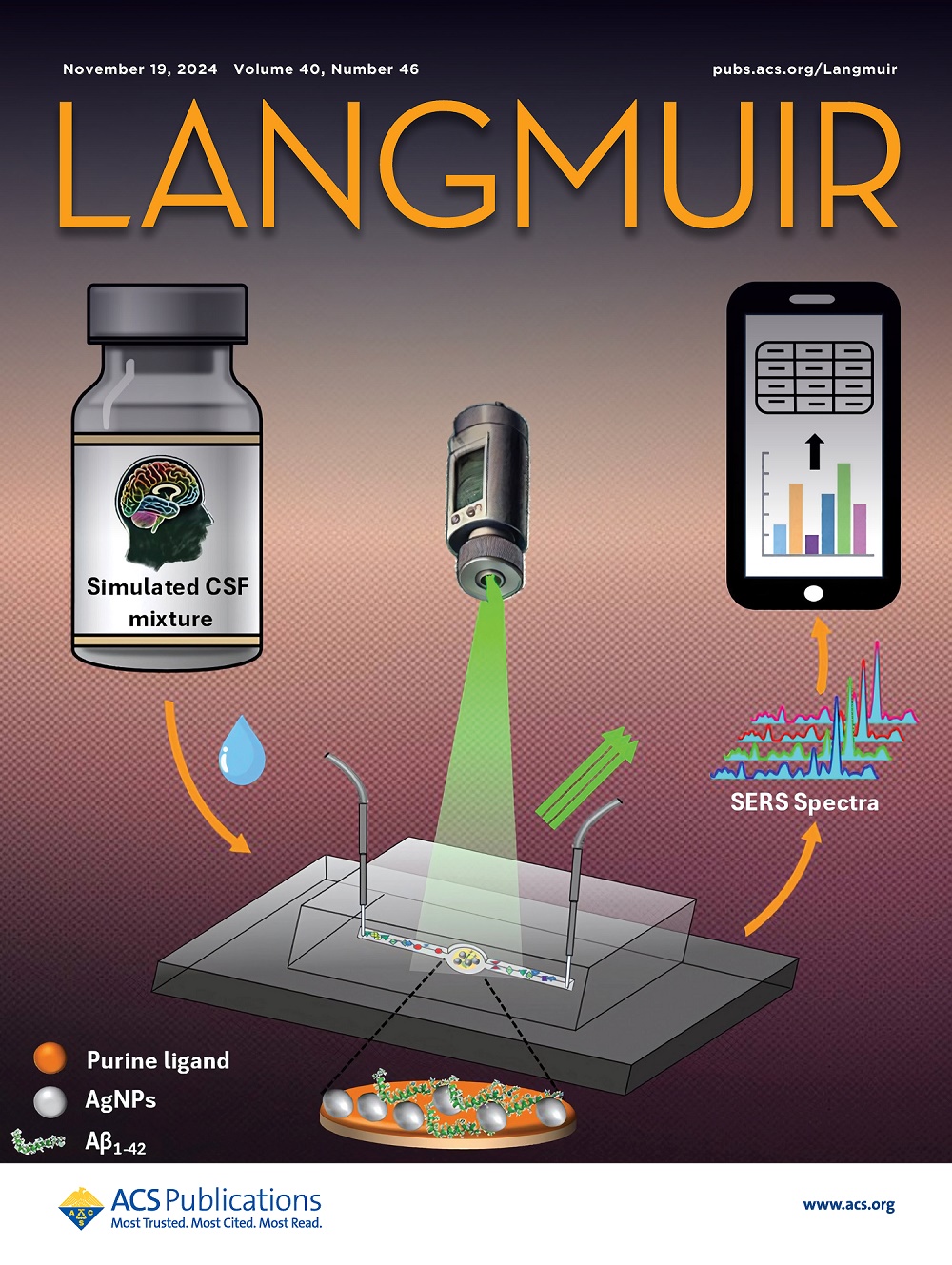Self-Driven Fluid Imbibition of Salt Solutions into Mesoporous Films
IF 3.7
2区 化学
Q2 CHEMISTRY, MULTIDISCIPLINARY
引用次数: 0
Abstract
Fluid water imbibition into nanoscale porous materials is important in nature and technology and has been shown to follow the Lucas–Washburn behavior. Looking at drop imbibition into nanoscale porous films, the imbibition reaches a steady state governed by capillary imbibition and evaporation, which is reflected in a constant imbibition length. This imbibition length in a steady state depends on the porous structure as well as on the material’s wettability and the fluid evaporation rate, for example. As the presence of salts affects these parameters, the imbibition length is expected to be influenced by the solutes present in the drop. Here, we show the influence of salt presence, salt concentration, and ion type on the fluid imbibition of an aqueous salt solution into mesoporous silica films. We observe that salts affect the Lucas–Washburn imbibition occurring directly after drop positioning on mesoporous films. Interestingly, the presence of salts also causes a continuous increase of the characteristic imbibition length at longer time scales, preventing the formation of a steady state after the initial Lucas–Washburn-like imbibition. We identified a self-amplified fluid pumping mechanism using mesoporous silica films. We attribute this continuous fluid pumping and, thus, the continuous increase of the imbibition length to the increasing osmotic pressure within mesoporous materials upon constant fluid flow and fluid evaporation. Understanding aqueous salt solution imbibition into mesoporous films is an important aspect, e.g., in the context of material exchange between drops through mesoporous films.

盐溶液在介孔膜中的自驱流体吸积
纳米级多孔材料中的流体吸水性在自然界和技术中都很重要,并且已被证明遵循Lucas-Washburn行为。从液滴在纳米级孔膜中的吸胀情况来看,液滴在纳米级孔膜中的吸胀达到了由毛细吸胀和蒸发控制的稳定状态,这体现在一个恒定的吸胀长度上。例如,稳定状态下的吸胀长度取决于多孔结构以及材料的润湿性和流体蒸发速率。由于盐的存在会影响这些参数,因此预计吸胀长度会受到液滴中溶质的影响。在这里,我们展示了盐的存在、盐浓度和离子类型对含水盐溶液进入介孔二氧化硅膜的流体吸吸的影响。我们观察到,盐对Lucas-Washburn吸胀的影响直接发生在滴定位在介孔膜上之后。有趣的是,盐的存在也会导致特征吸胀长度在更长的时间尺度上持续增加,从而阻止了初始lucas - washburn样吸胀后稳定状态的形成。我们确定了一种使用介孔硅膜的自放大流体泵送机制。我们将这种连续的流体泵送和吸胀长度的持续增加归因于在恒定的流体流动和流体蒸发过程中介孔材料内部渗透压的增加。了解盐水溶液在介孔膜中的吸胀是一个重要的方面,例如,在通过介孔膜的液滴之间的物质交换的背景下。
本文章由计算机程序翻译,如有差异,请以英文原文为准。
求助全文
约1分钟内获得全文
求助全文
来源期刊

Langmuir
化学-材料科学:综合
CiteScore
6.50
自引率
10.30%
发文量
1464
审稿时长
2.1 months
期刊介绍:
Langmuir is an interdisciplinary journal publishing articles in the following subject categories:
Colloids: surfactants and self-assembly, dispersions, emulsions, foams
Interfaces: adsorption, reactions, films, forces
Biological Interfaces: biocolloids, biomolecular and biomimetic materials
Materials: nano- and mesostructured materials, polymers, gels, liquid crystals
Electrochemistry: interfacial charge transfer, charge transport, electrocatalysis, electrokinetic phenomena, bioelectrochemistry
Devices and Applications: sensors, fluidics, patterning, catalysis, photonic crystals
However, when high-impact, original work is submitted that does not fit within the above categories, decisions to accept or decline such papers will be based on one criteria: What Would Irving Do?
Langmuir ranks #2 in citations out of 136 journals in the category of Physical Chemistry with 113,157 total citations. The journal received an Impact Factor of 4.384*.
This journal is also indexed in the categories of Materials Science (ranked #1) and Multidisciplinary Chemistry (ranked #5).
 求助内容:
求助内容: 应助结果提醒方式:
应助结果提醒方式:


